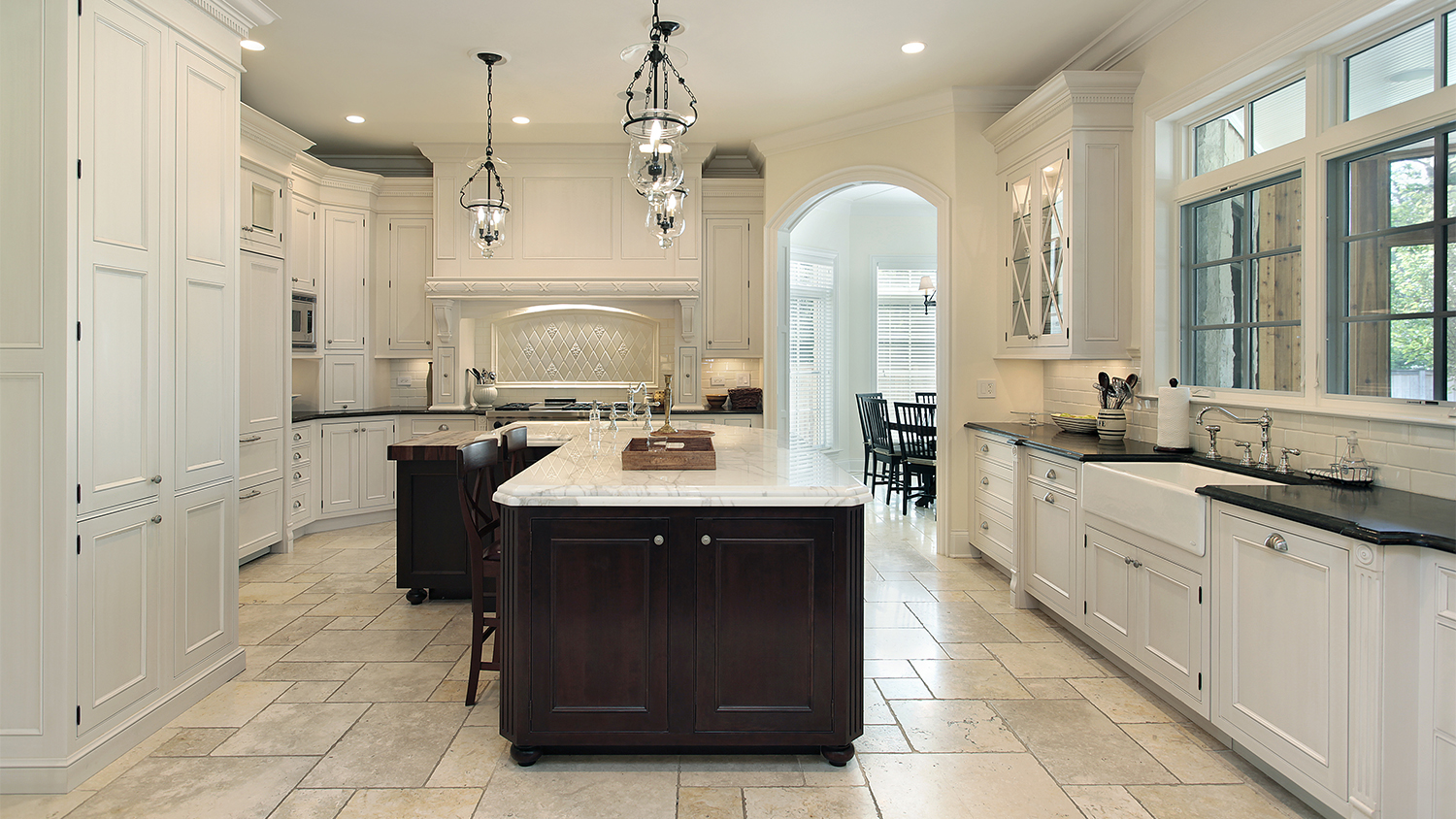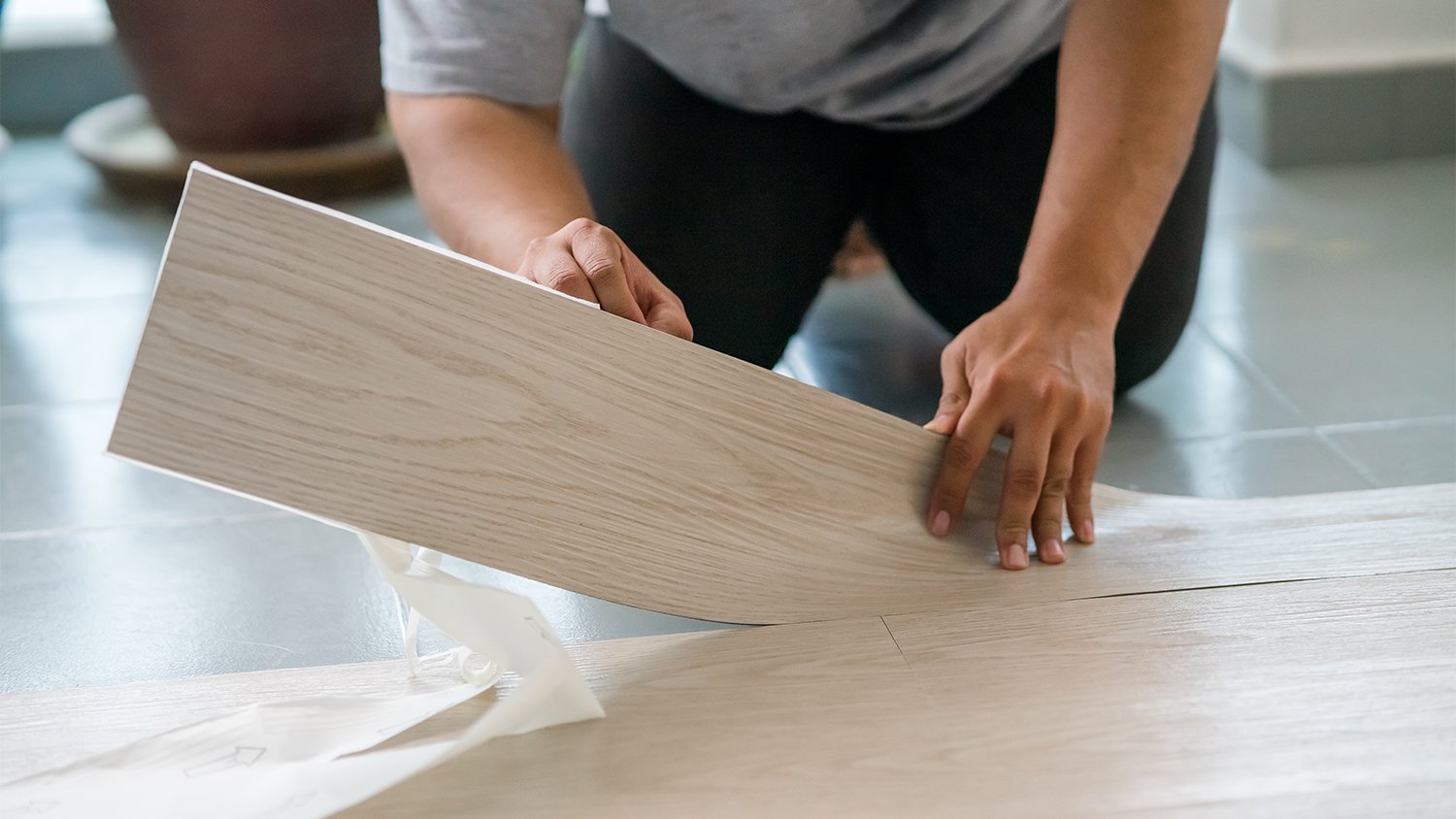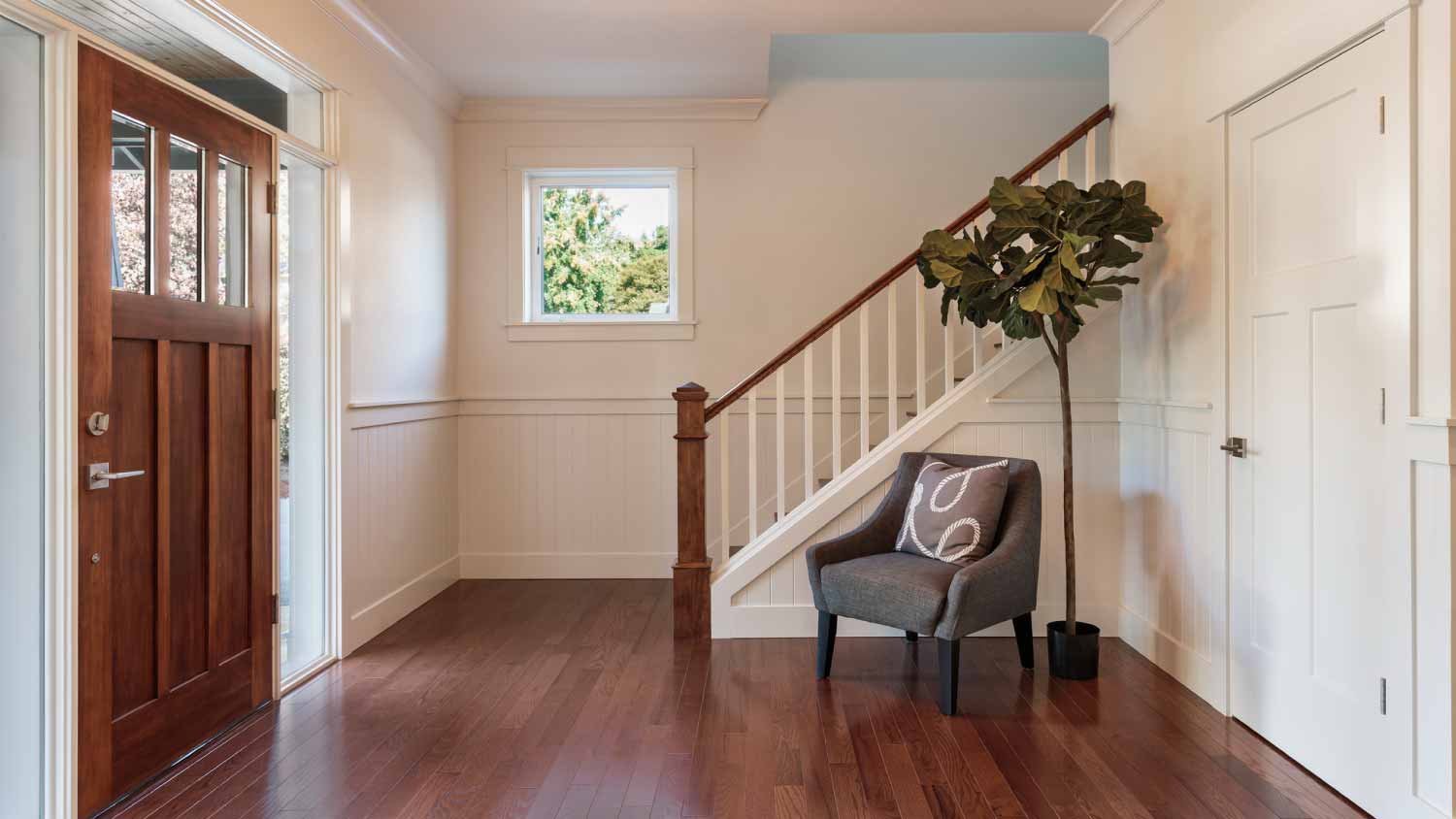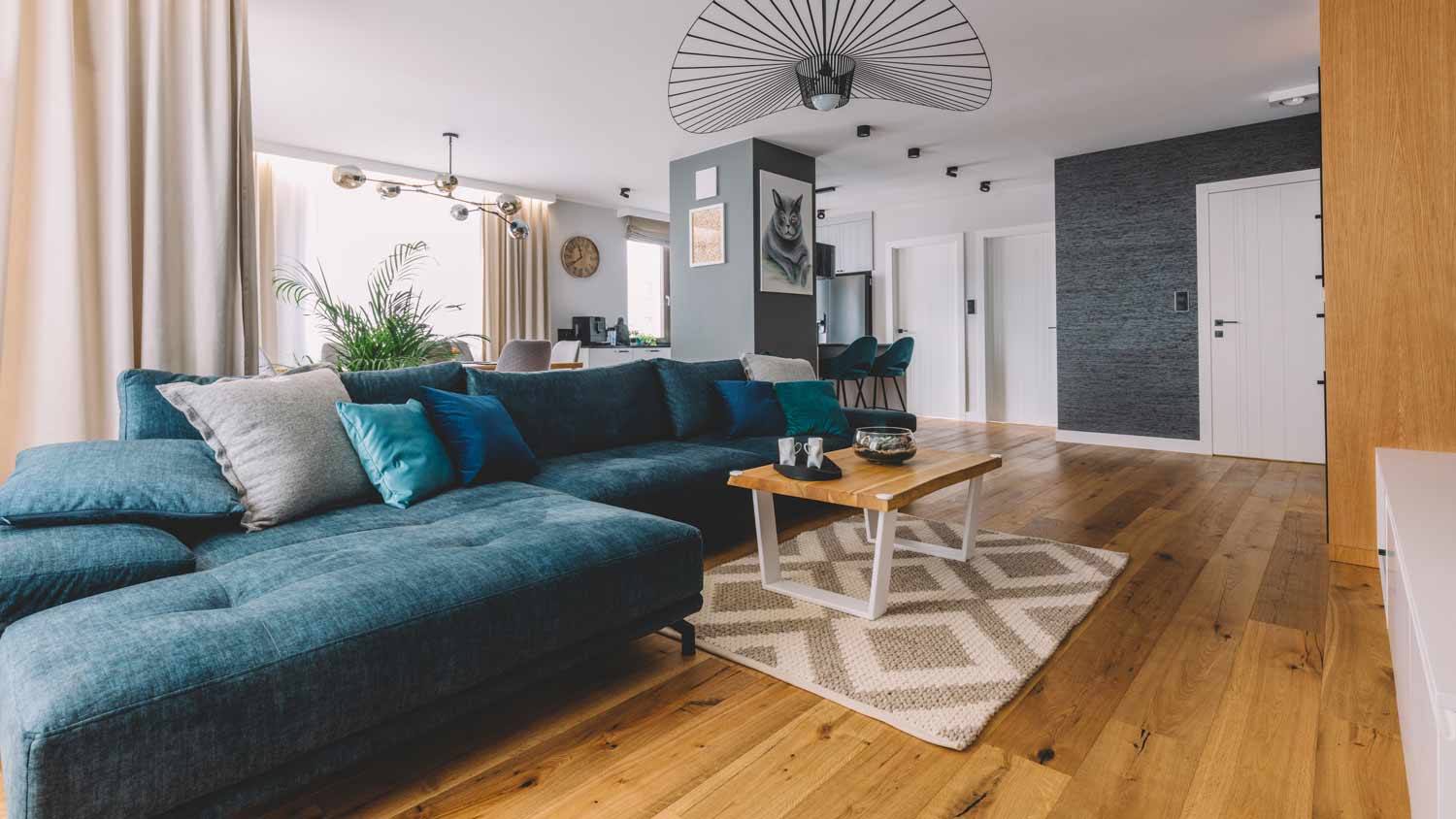5 of the Best Choices for Vinyl Flooring for Kitchens
Update your kitchen floor in record time with vinyl
In a room prone to heavy use and spills, your kitchen needs flooring that’s durable and low-maintenance. It’s an added bonus if you can find hardy, easy-to-clean flooring that fits within a tight budget. Enter vinyl, which comes in many types and styles that can offer different benefits for a kitchen. Find the right vinyl flooring for your kitchen by comparing the pros and cons of each vinyl floor type.
| Vinyl Flooring Type | Benefit | Consideration |
|---|---|---|
| LVP | Durable | Higher cost |
| LVT | Versatile look | Less eco-friendly |
| Sheet | Moisture-resistant | Hard to remove |
| Peel-and-stick | Easy to install | Shorter life span |
| Click-and-lock | Waterproof | Bouncy feeling |
1. Luxury Vinyl Plank (LVP) Flooring
One of the most popular types of vinyl is luxury vinyl plank, or LVP, flooring. This type of vinyl flooring for a kitchen comes in planks that resemble hardwood, and homeowners love how easy it is to clean vinyl plank flooring.
The planks are made from several layers to improve performance. LVP may have an IXPE foam base layer for insulation and more comfort underfoot, a waterproof core, PVC for better humidity protection, a decorative layer to resemble wood, and protective wear and UV layers for better resistance to scratches and bacteria.
| Pros | Cons |
|---|---|
| Lower cost than hardwood | More expensive than other vinyl types |
| Easy to install | Emits VOCs |
| Durable | Difficult to remove |
Best for: Replicating the look of hardwood
2. Luxury Vinyl Tile (LVT) Flooring

Luxury vinyl tile, or LVT, is similar to LVP, but it comes in a different application format. Instead of planks, LVT comes in tiles. Like LVP, it has multiple layers for protection and decoration. The tile form makes this a good option to replicate a wide variety of materials, like wood or stone. Both LVP and LVT tend to increase the cost of vinyl flooring because of their added durability and design options.
| Pros | Cons |
|---|---|
| Moisture resistance | Can become discolored |
| Wide variety of appearance options | Vulnerable to sharp objects |
| Easy to maintain | Less eco-friendly |
Best for: Replicating the look of stone or wood flooring
3. Sheet Vinyl Flooring
Also known as vinyl roll, sheet vinyl comes in large rolls that you cut to fit a space. Like other types of vinyl flooring, sheet vinyl has several layers of different materials, like foam and PVC, and it may or may not feature a protective UV layer on top. This style is less expensive than LVP and LVT.
| Pros | Cons |
|---|---|
| Moisture resistance | Shows subfloor imperfections |
| Stain resistance | Hard to repair |
| More affordable | May yellow or fade over time |
Best for: Mess-prone kitchens or homes with young kids and pets
4. Peel-and-Stick Vinyl Flooring

Peel-and-stick vinyl flooring may come in LVP, LVT, or sheet options. Rather than needing to purchase glue to apply and lay the vinyl flooring, peel-and-stick offers an easy way for DIYers to install vinyl flooring. Simply peel off the plastic backing to reveal the adhesive, and carefully smooth out the vinyl sheet, planks, or tiles as you lay them on the floor.
| Pros | Cons |
|---|---|
| Easy to DIY | Lower durability |
| May work on existing floors | Less water resistance |
| Easier to remove | May gap over time |
Best for: DIY installations
5. Click-and-Lock Vinyl Flooring
Opt for flooring materials that are waterproof, not just water-resistant. Since water is always present in kitchens and bathrooms, it’s only a matter of time before there's a spill or overflow, and water-resistant materials don't offer the same level of protection.
Click-and-lock flooring, or interlocking flooring, makes it easier to install vinyl floors in your kitchen while still boasting waterproof properties. It features vinyl planks that click together over a subfloor or existing floor for a more durable floor. Because you don’t adhere it to the floor, click-and-lock vinyl may feel bouncy underfoot if the planks rise over time. You can find LVP or LVT in click-and-lock options.
| Pros | Cons |
|---|---|
| Easy to install | Not suitable for refinishing |
| Easy to remove | Vulnerable to fading |
| Waterproof | May feel bouncy underfoot |
Best for: DIY installations
How Do I Choose the Right Vinyl Flooring?
Choosing the right vinyl flooring will depend on a few things. First, for a tight budget, you may want to skip LVP or LVT in favor of sheet vinyl, which costs less. Also, consider whether you want to try to install the flooring yourself or work with a pro. Some vinyl flooring types, like click vinyl or peel-and-stick, are easier to install without expert help.
When shopping for vinyl flooring for a kitchen, make sure to look for options with extra protective layers, like waterproofing or UV-protective layers. This will decrease the likelihood of water or UV rays permanently damaging your new vinyl floors.
Can I Install Vinyl Flooring Myself?
Some vinyl flooring installation is easy for savvy DIYers to install. Click-and-lock and peel-and-stick vinyl don’t require separate adhesive or glue, so these are often DIY-friendly. Vinyl that you need to glue down to the subfloors is trickier to install because you have to prepare the subfloor to be as strong and smooth as possible. Otherwise, even a small imperfection will show through in your vinyl flooring.
While some types of vinyl flooring are easy to install yourself, keep in mind that any gaps between planks can be an issue. When it comes to vinyl flooring in a kitchen, food or beverages may spill, and if there are gaps, you could ruin the vinyl floors and the subfloors beneath them.
Instead, hire a local flooring company to handle your vinyl flooring installation. The pros will make sure your vinyl floors lay seamlessly and are fully prepared for all the spills and messes your family may make.

.jpg?impolicy=leadImage)



- Luxury Vinyl Flooring Pros and Cons: Is It Right for Your Home?
- Laminate vs. Vinyl Flooring: Pros, Cons, Costs, and More
- How to Install Sheet Vinyl Flooring Like a Pro
- 11 Types of Flooring to Consider for Your Home
- 6 Inexpensive Flooring Options That Look Good and Save You Money
- The Unfortunate Signs of Mold Under Vinyl Flooring
- What Are Vinyl Windows? Your Guide to the Most Popular Window Frame
- The Best Flooring Options for Dogs: A Complete Guide
- Learn the Pros and Cons of Vinyl Siding
- What’s the Best Flooring for Bathrooms? Here Are 5 Durable Picks











